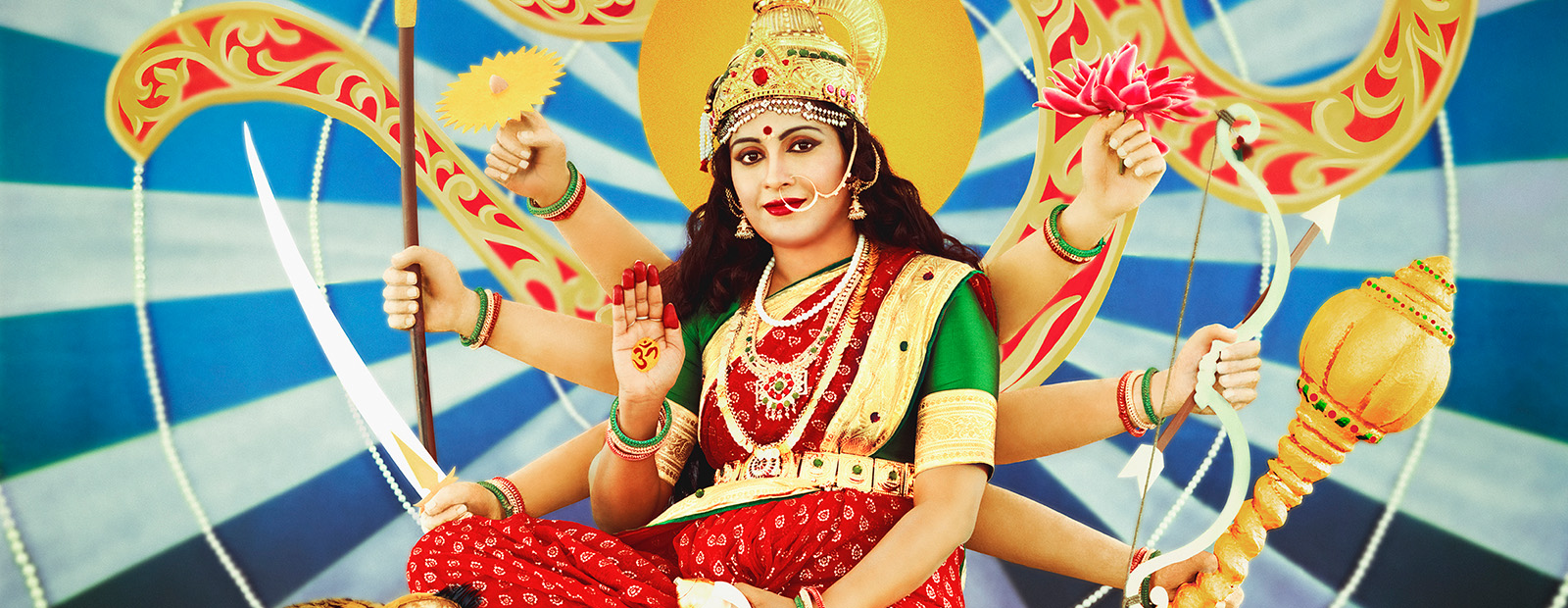Over nine nights, the Hindu festival of Chaitra Navratri celebrates the nine divine forms of the goddess Durga. Ending this spring on April 2, Navratri, literally "nine nights," consists of prayers, rituals, performances all dedicated to the celebration of the powerful deity whose energy represents the triumph of good over evil.
Below, artist Majari Sharma shares some thoughts about Durga and about her photograph of the goddess in the exhibition Transcendent Deities of India: The Everyday Occurrence of the Divine. Think about her descriptions as you work a puzzle made from her photograph.
Click here to see the entire photograph.
- Maa (Mother) Durga is a Hindu Goddess who represents shakti, feminine energy and divine power used against negativity and evil. Maa Durga preserves moral order and righteousness; she is a gentle yet fierce multiarmed force whose hands hold multiple weapons and form mudras that represent her teachings.
- The word Durga comes from the Sanskrit word for "fortress" (durg) and means invincible. Born from the combined powers of Lord Brahma, Vishnu, and Shiva, Maa Durga is worshiped as a mighty warrior who intervenes to protect and safeguard her devotees. In the photograph, she is pictured in front of the symbol for "Om," a visual form of the sacred cosmic sound of the universe (Chanted as A-U-M represents Lord Brahma, Vishnu, and Shiva).
- Maa Durga rides a Tiger. A tiger symbolizes unbridled power and uncontrolled animalistic tendencies, and her riding this tiger reminds us to be in control of those tendencies in ourselves, and not to be controlled by them.
- Maa Durga, a warrior with eight hands, is always seen with a gentle smile, holding her right hand up with her palm facing out, bestowing blessings on her devotees. Her other hands hold weapons from the gods. The chakra symbolizes one's cyclical duty, and the conch symbolizes happiness. The sword symbolizes power, and a bow and arrow showcases aim and also references Lord Rama (an incarnate of Lord Vishnu). The lotus symbolizes beauty and detachment, and the club is a symbol of devotion and surrender (Lord Hanuman). Last but not least, the trident symbolizes courage and is a reference to Lord Shiva, who is her husband.
- In my photograph, this compelling character was played by a real-life actress, a woman who I came to know as a true hyphenate—a mother, a celebrated television actress, and a formidable make-up artist played the part of Maa Durga in my photograph. Not only did she play her costumed role on my set, but she also saved the day by running several people's crew duties. On the day I photographed Maa Durga, a few different crew members failed to come through on their tasks. Maa Durga stepped in to do precisely what she is known for . . . she became my tour de force and the Durga my day needed. Stepping in as a formidable multi-armed force she came through as a make-up artist, and she helped construct her own costume and jewelry; Maa Durga helped an ailing set come to life both in form and function.





